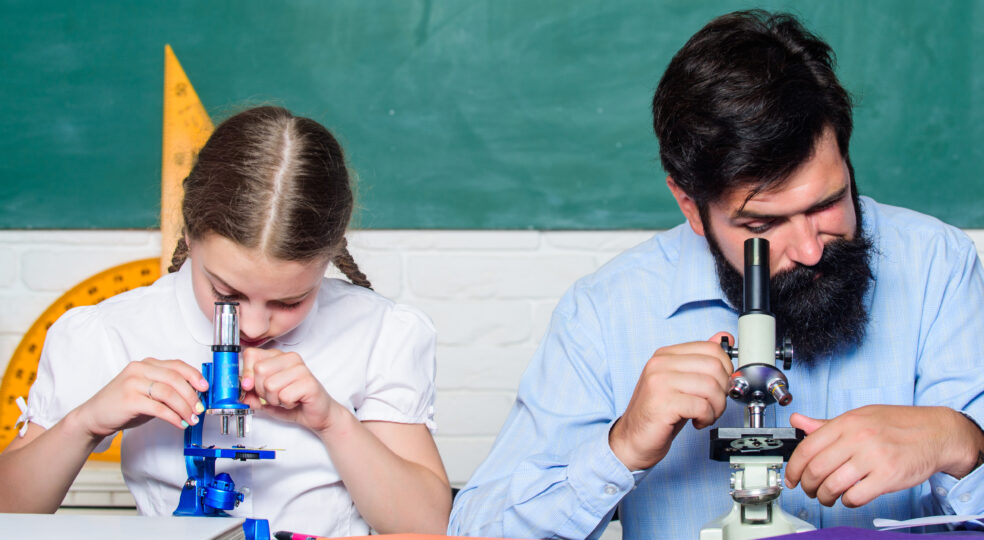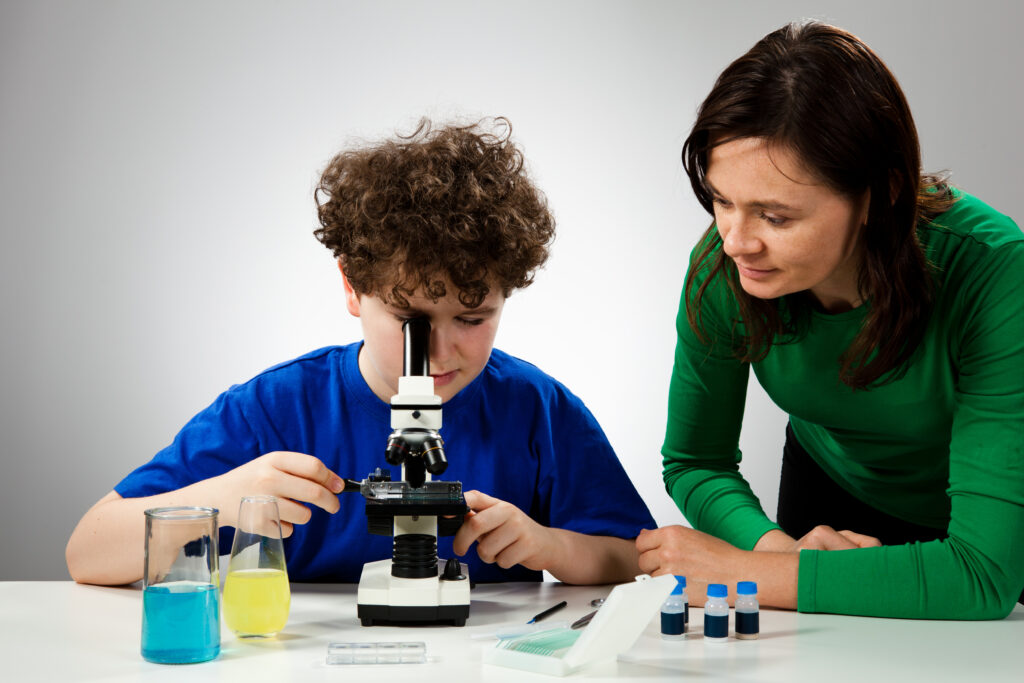Children are curious and constantly ask questions: Why is that? You can explain some things, but it is more exciting to show them directly. Prepare exciting experiments for children and look forward to the amazed eyes. The little explorers have a lot of fun with the handicrafts. Playing with water or light, trying out magnets - the phenomena arouse their enthusiasm. In addition, there is the learning effect.
But how do you do experiments for Children? Simple experiments for children require only a few accessories. A glass, a bottle, candy or sand - these things you surely have in the house.
Why are experiments important for children?
For children, experiments are a game in which they learn a lot. At a young age, their thirst for knowledge is enormous. In addition, this makes playful learning really fun with experiments and explorations. The experiments for children are often fun and easy to copy. With this you promote the Motivation of your children and amaze them.
How important are experiments for children? You'll notice this when your offspring get to grips with the laws of physics more intensively. The enthusiasm of the little researchers sometimes lasts for a long time. What happens when ... Experiments with children also arouse your own interest. Does it really work? The joint tests and games give you a lot of pleasure. If something doesn't work right away: Just try it again. This is how the Children not only know the world better, but they also cope better with setbacks.
The 20 most exciting experiments for children
In the experiments for children you will find manifold ideas to copy. Some are rather simple, but for other experiments for children, instructions are indispensable. In addition, you should definitely be there, especially for the experiments with fire. Let yourself be surprised - and have a lot of fun.
- Burning tea bagsOpen the tea bags, empty them and remove the thread. When you unfold the bags, they look like chimneys. Put them on the table and light them. After a short time, the tea bags take off - like small, burning rockets. The tabletop does not suffer, only a fine shower of ash comes down.
- Dancing berriesFill a glass with lemonade and add a few grapes. These dance merrily in the bubbling liquid.
- The lava bubblesForm a volcano out of sand or plasticine and put a cup of colored vinegar in the crater. Now add baking soda: Thereupon the lava begins to bubble and flows down the outside of the volcano.
- Ü egg rocketFill the yellow shell of the Ü egg with a teaspoon of baking soda and some vinegar. Close the shell quickly - and the rocket goes off.
- LetterpressCut out mirror-inverted letters from felt and glue them onto an empty toilet paper roll. Paint the letters with acrylic paint. Using shish kebab games and a full roll, place them in a suitable shoebox so that you have a real printing press. In serpentine lines, the letters now press themselves onto the toilet paper, which unwinds like endless printing.
- Money laundering with a difference: Pour vinegar into a jar, add table salt and mix everything thoroughly. Then add dirty coins and wait a few minutes. Dry the coins - and marvel at the new shine!
- Pepper and salt: You have scattered pepper and salt on the table. An inflated balloon helps you to separate the two. Rub the balloon vigorously against a wool fabric - a sweater or cardigan. This will cause it to become electrostatically charged. Move it just above the tabletop. Pepper is lighter than salt, so it pulls up to the balloon, where it sticks.
- Chain reaction: one of the most popular experiments for children. Build a ball track so that it triggers a certain event. For example, the toy car transports a cookie across the room or a pencil falls from the table to the floor.
- Test sugar cube: How much water can a sugar cube absorb - and what happens when you build a cube tower? Try out not only colored water, but also other liquids.
- Pisces Swim: In the experiments for children with water, this idea is easy to imitate. Cut small fish out of paper and paint them with Neocolor. Dab the tail fin with a drop of dishwashing liquid and place the fish in a wide glass of water. The dishwashing liquid quickly propels the fish forward.
- Salt light: Fill a sturdy glass with table salt, about 1 cm high. Now fill it with water to a maximum height of 4 cm. With a little food coloring, this experiment becomes particularly interesting. Stir everything. Now is Patience necessary: Place the glass in a warm place and do not touch it. Only peering is allowed. In one or two weeks the water evaporates and the salt crystallizes. New crystals are deposited - and you have conjured up a beautiful tea light holder.
- Colorful chewy dragees: The Skittles experiment turns children into color artists. Place the colored dragées in a circle on a plate and sprinkle them with a little water. This creates colorful stripes that inspire ever new experiments and patterns.
- Test daisies: Some experiments for children deal with nature. Do the daisies also close their flowers when it stays light overnight? Dig up a little flower and put it in a small pot. Place it under a bright lamp in the evening, when it gets dark. Your child looks closely: In fact, the flower closes here, too. Obviously, the flower has an internal clock.
- The pea prank: Put dried peas in a tall jar up to the rim. Now add some water and place the jar on a tin lid - preferably in a hidden place. Soon there will be a spooky popping and clattering sound: these are the swelling peas that fall out.
- Sound Path: On different materials, the steps always make different sounds. Lay out newspapers, a wool blanket, bubble wrap, or cork boards. One child closes his eyes and has to say where the others are placing their steps.
- Music from glasses: Fill a large number of glasses with different amounts of water. Using a wooden spoon or another stick, use the glasses as a musical instrument. Who can recognize the melody?
- Aluminum ball on diving station: In a transparent plastic bottle, the crumpled ball of aluminum foil floats up and down. All it takes is a little pressure on the bottle. A simple experiment that keeps young children entertained for a long time.
- No ice cream - or is it? Fill a plastic bottle with distilled water and put it in the freezer. After a while, have your child check to see if it's frozen yet. No, nothing, is the answer. Shake it, you say - and suddenly it does turn into ice!
- White light with rainbow: Place a glass of water on a white sheet and glue a cardboard with a slit to the glass. Now place everything so that the sun's rays fall through the slit. You can see all the colors of the rainbow on the white background.
- Make dandelion yourself: Nature knows how flying works. The seeds of the dandelion fly on feather-light parachutes. Make your own dandelion with your children - from a pipe cleaner, a sheet of paper and a wooden bead. How far does the parachute fly?
Experiments for children - please copy!
The diverse experiments for children stimulate the ability to learn and also creativity. Even the little ones want to know explanations and find it exciting, try something out for yourself. Support your offspring in the process. You'll have fun doing it yourself.
Why are experiments important for children? Quite clearly: Because they help to understand the world. This applies not only to the big experiments for children, but also to the small ones. The capacity for enthusiasm is already very great at kindergarten age, and what's more, the little ones find learning extremely easy. They remember an astonishing amount and soon dare to try their own experiments. When it comes to experiments with fire or chemistry, however, you should be careful that nothing happens.
Early experiments for children thus help them learn and satisfy their curiosity. At the same time, they awaken an interest in nature and more or less normal processes. You can support this urge to explore - and thus the development of your Promote children. This has a positive effect on later learning ability and the Self-confidence out. You'll also get rid of boredom and spend quality time together.
FREE E-BOOK
The 10 best tips for
Fun and success in learning
In our free e-book you get 10 tried and tested tipsthat will help you to support your child in learning in the best possible way.
REQUEST NOW FREE OF CHARGE


